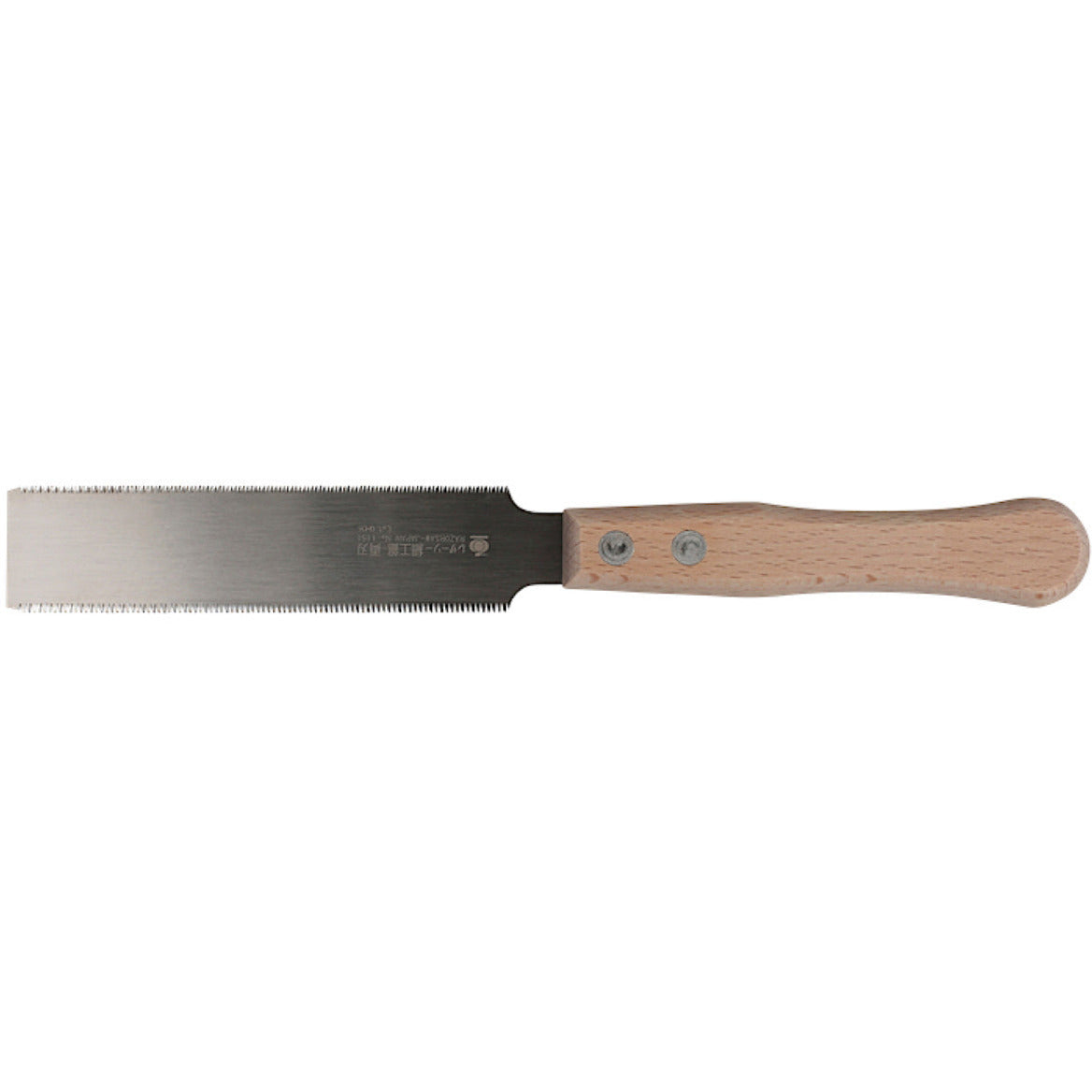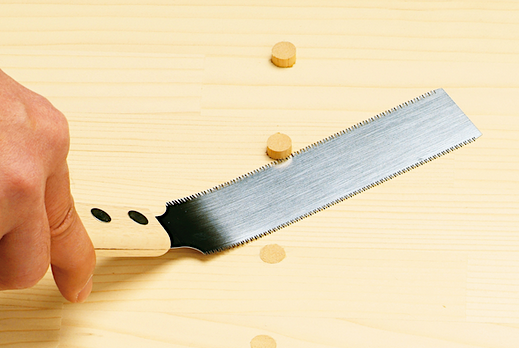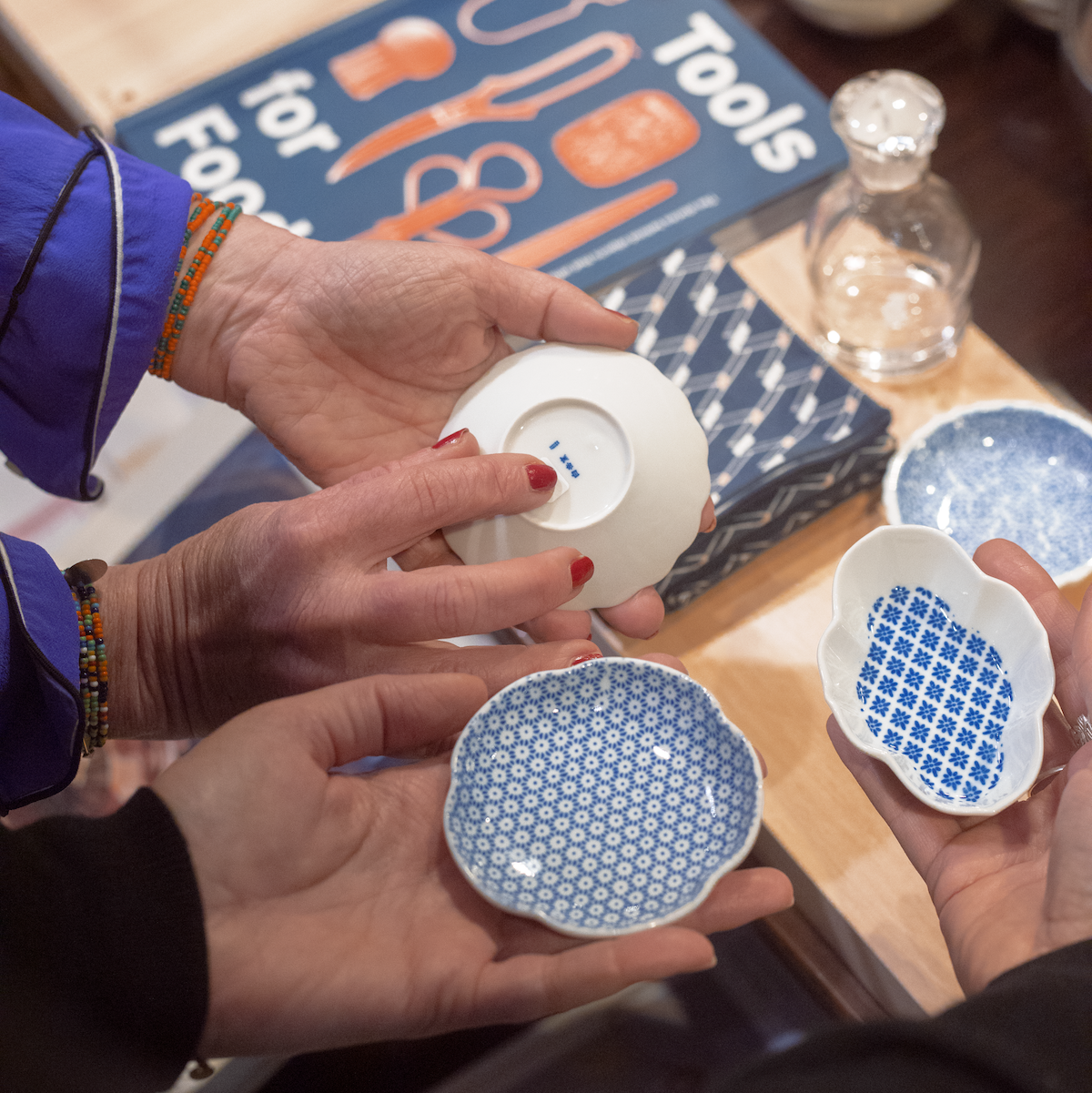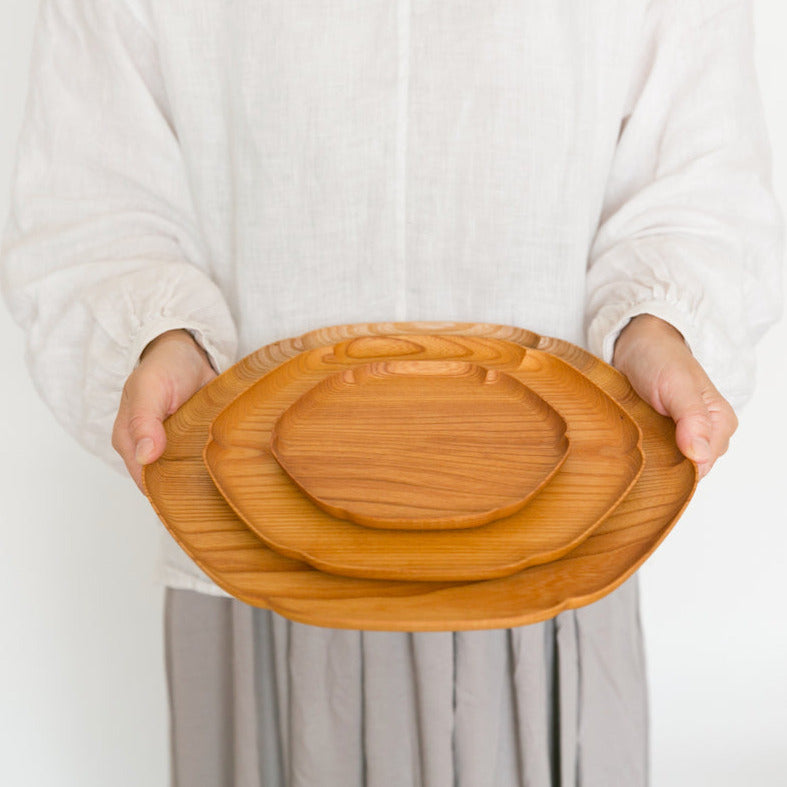

Razorsaw Japanese Saw Gyokucho Ryoba | 125mm | Pine Wood
- Material saw blade: SK5 steel
- Material handle: pine
- Blade thickness: 0.30 mm
- Cutting width: 0.30 mm
- Blade length: 125mm
- Tooth pitch, cpi: 1.00 mm / 25 cpi and 1.3 mm / 20 cpi
- Overall length: 270 x 32 x 15mm
- Weight: 42g
- No replaceable blade .
- Manufacturer: Gyokucho
. - Made in Japan
![]() Kostenloser Versand
Kostenloser Versand
Jetzt vorbestellen, Artikel ist nachbestellt.
In Kürze wieder lieferbar.
Kostenfreier Versand ab CHF 100,-
Choose options


Beschreibung
TTraditional RazorsawJapanese saws from Gyokucho zfor flush cutting of protruding wooden dowels. The surrounding surface is not damaged in the process.
A small saw traditionally used in Japanese carpentry for flush cutting of protruding wooden or bamboo nails used for pinning joints. The thin blade is incredibly flexible. Even after bending beyond 90°, it springs straight again. Thanks to unrestricted serrations, it can cut a dowel or tenon flush without damaging the surrounding surface.
When using this saw, it helps if you place the fingers of your free hand lightly on the back of the blade just behind the cut. This gives you much more control. The blade has two sides, a fine tooth pitch on one side for hardwoods and a slightly coarser one on the other side for softwoods. The blade length is 125 mm, equipped with a handle made of pine.
This saw is designed for fine machining of workpieces and is therefore not suitable for normal sawing work.
Care and use instructions:
Most Niwaki tools are made of carbon steel - this means that with regular use they will stain (and eventually rust) and gradually lose their sharpness. Caring for them involves three things.
1. Proper use:
- Japanese steel is hard and sharp and can be more brittle than some people are used to - it will break if overused .
- Do not cut wire, metal, stone, plastic or any other hard material (even bamboo fibres and some very hard woods, especially knots and burrs, can damage steel edges) .
- Do not twist or apply uneven pressure .
- Cut diagonally across the branches (not straight) so that you cut along the fibres .
- Watch the maximum cutting dimensions and don't overdo it (shears are not loppers)
- Use the base of the blades, not the tips, for heavier cuts .
2. Keep clean:
- Remove leaf resin, rust and dirt with a Crean Mate and water .
- Dry, wipe with Camellia oil and store in a dry place .
3. Keep them sharp:
Even new tools need sharpening after a certain time. For best results, use a grindstone of 1000 grit, for general sharpening.

Die Story zu NIWAKI

Wollt ihr wissen wer hinter ASANDRI steht
«Wir glauben, dass die Kombination von grossartigem Design und handwerklichen Können wichtig ist. Deshalb unterstützen wir Handwerker weltweit, um ihre Fähigkeiten und Handwerksbetriebe für viele weitere Generationenzu erhalten.»
Kontaktiere uns: info@asandri.com
